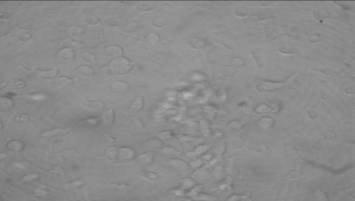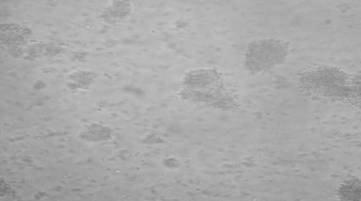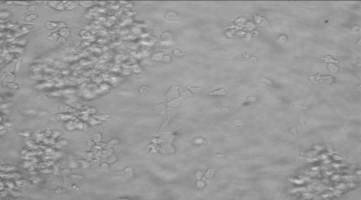In-vitro culture method for T lymphocytes
A lymphocyte, in vitro culture technology, applied in animal cells, vertebrate cells, blood/immune system cells, etc., can solve the problems of inconvenient use, high cost, unfavorable medical research and clinical application, etc. Reduced requirements for transport conditions and the effect of reducing accidental infections
- Summary
- Abstract
- Description
- Claims
- Application Information
AI Technical Summary
Problems solved by technology
Method used
Image
Examples
Embodiment 1
[0038] Human peripheral blood is now used as a processed sample, and the contents of the kit of the present invention are used to sort and induce CIK cells, and apply it to clinical biological treatment. The specific operation steps are as follows:
[0039] step one. blood processing
[0040] 1. Pour 50ml of anticoagulated blood into a 50ml centrifuge tube and centrifuge at 1600~2000×g for 10min at 4°C. If it cannot be centrifuged immediately, it can be stored at 4°C, but not more than 4 hours.
[0041] 2. Use a pipette to transfer the upper layer of plasma into a new 50ml centrifuge tube, and mark the patient information. Inactivate at 56°C for 30min.
[0042] 3. Dilute the blood cells with normal saline to 50ml, and mix with a pipette. The above is the process of diluting blood cells.
[0043] 4. Slowly pour the diluted blood cells into each tube of 7ml cell sorting medium at a ratio of 1:1. Be careful not to break the interface.
[0044] 5. Centrifuge at 2200~2500×g...
Embodiment 2
[0102] The invention can also be used for the in vitro induction and expansion of T lymphocytes in human umbilical cord blood. The specific operation steps are as follows:
[0103] step one. blood processing
[0104] 1. Inject 80ml of anticoagulated umbilical cord blood into four 50ml centrifuge tubes, and centrifuge at 1600~2000×g for 10min at 4°C. If it cannot be centrifuged immediately, it can be stored at 4°C, but not more than 4 hours.
[0105] 2. Discard the upper plasma layer.
[0106] 3. Dilute 4 tubes of blood cells with normal saline to 50ml, and mix with a pipette. The above is the process of diluting blood cells.
[0107] 4. Slowly pour the diluted blood cells into each tube of 7ml cell sorting medium at a ratio of 1:1. Be careful not to break the interface.
[0108] 5. Centrifuge at 2200~2500×g for 20min at 20°C. Pipette the second layer of cells into a new 50ml centrifuge tube.
[0109] 6. Add physiological saline to the newly collected cells to 50ml, an...
Embodiment 3
[0128] The invention can also be used for the in vitro induction and expansion of T lymphocytes in human pleural fluid or ascites. The specific operation steps are as follows:
[0129] step one. Take 1000ml of pleural fluid or ascites, and centrifuge at 1600-2000×g for 4-5min at 4°C.
[0130] Step two. Discard the supernatant, flick the bottom of the centrifuge tube to break up the precipitate.
[0131] Step three. Rinse the cells 3 times with saline.
[0132] Step four. Take the coated bottle, rinse it once with normal saline or culture medium and discard it.
[0133] Step five. Take 25ml of culture medium to resuspend the cells, mix thoroughly with a pipette and transfer them into the coating bottle.
[0134] Step six. Rinse the centrifuge tube with 25ml of medium, and transfer the rinsing solution into the coating bottle again.
[0135] Step seven. Place the flask in 5% CO 2 , cultured in a 37°C incubator.
[0136] Subsequent steps are the same as in Example 1 ...
PUM
 Login to View More
Login to View More Abstract
Description
Claims
Application Information
 Login to View More
Login to View More - R&D
- Intellectual Property
- Life Sciences
- Materials
- Tech Scout
- Unparalleled Data Quality
- Higher Quality Content
- 60% Fewer Hallucinations
Browse by: Latest US Patents, China's latest patents, Technical Efficacy Thesaurus, Application Domain, Technology Topic, Popular Technical Reports.
© 2025 PatSnap. All rights reserved.Legal|Privacy policy|Modern Slavery Act Transparency Statement|Sitemap|About US| Contact US: help@patsnap.com



